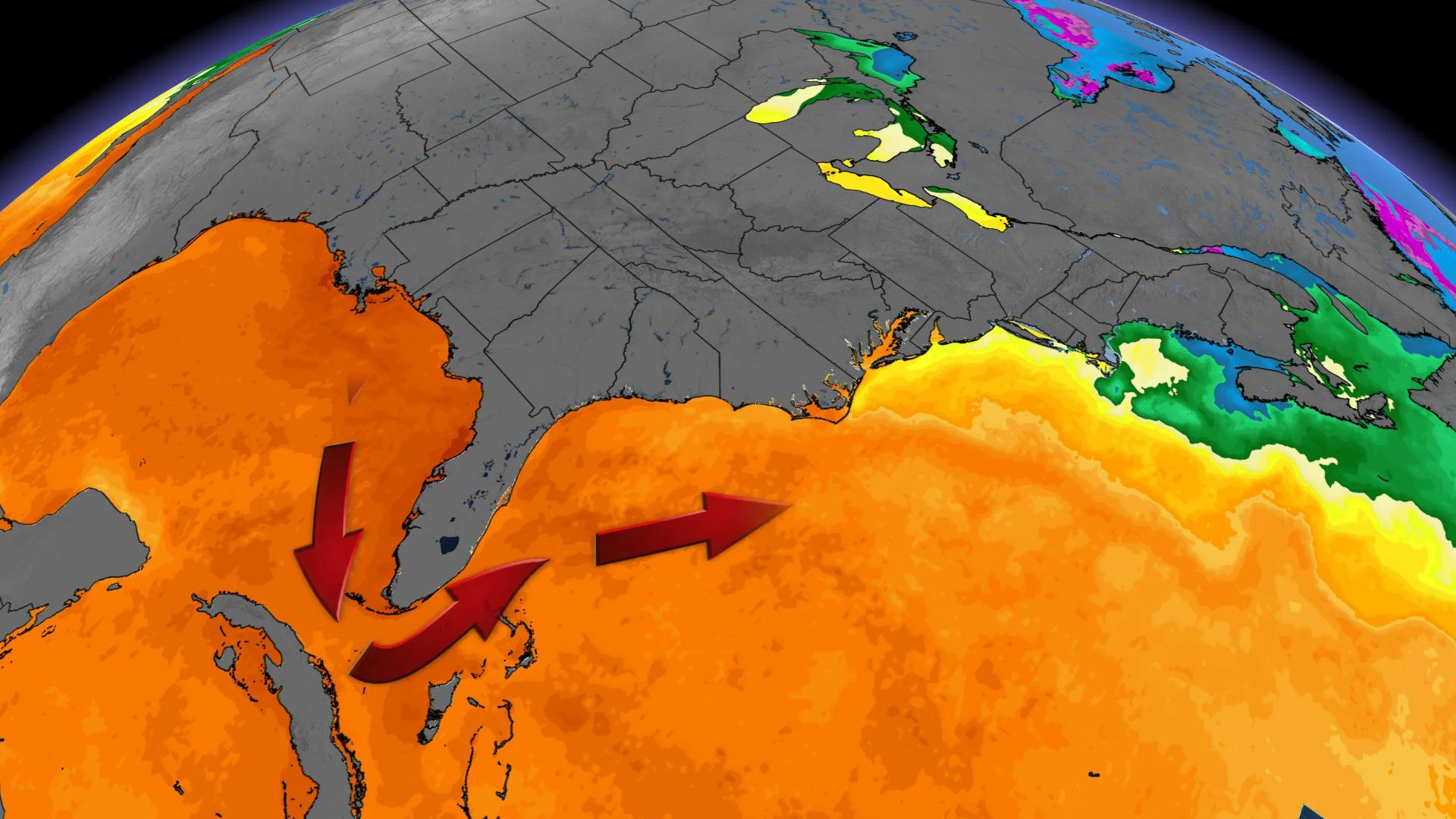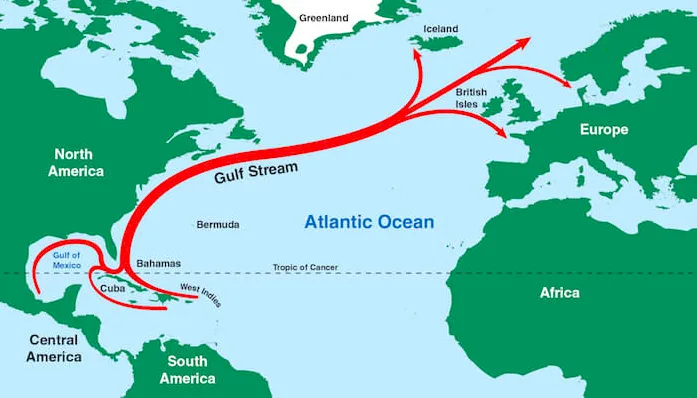
The Florida Current is weakening, here's why scientists are concerned
Researchers say that enough precipitation and meltwater from disappearing glaciers and ice sheets could seriously disrupt salinity levels in the oceans.
A recent research paper in Nature Communications echoes the findings that climate scientists around the world are observing - parts of the Gulf Stream are slowing down.
Ocean currents are complex and have far-reaching impacts on all continents on Earth. From the icebergs that float past Newfoundland to the harbours that never freeze in northern Norway, the warmth from the Gulf Stream plays a key role in the climates that we are familiar with today.
The long-term effects that the warming atmosphere has on the oceans are not just difficult to see, they are also not widely understood. Changes in ocean currents naturally occur, but present-day climate change is threatening impacts to the Florida Current, which is considered the official beginning of the Gulf Stream System.
Ocean currents transport heat from the equator to the poles and play an important role in determining Earth’s climate. The Gulf Stream, an ocean current that Canadians are very familiar with, flows from the Florida Straits past Cape Hatteras, North Carolina. It travels along the southeastern coastline of the U.S. before veering out into the Atlantic Ocean and brings warmth from the Caribbean to the parts of the Atlantic Canada, which significantly influences this region’s weather and climate.
Many European countries have the same elevations as regions in Canada, but the Gulf Stream creates much warmer climates. England is about the same distance from the equator as cold regions of Canada, such as the northern Prairies, yet England’s climate is much warmer due to the warm water from the Gulf Stream.
Natural changes in salinity and sea level have occurred for hundreds of years, but the rate of sea level rise has soared since the early 1900s. Melting glaciers and ice caps, as well as the expansion of seawater as it warms, have contributed to the rising oceans, but the consequences this has on the transport of heat, salinity, and other minerals around the planet are not entirely known.

The Gulf Stream transports warm water along the eastern coast of the U.S. and Canada and on to parts of Europe. Credit: NOAA
Measurements of the water flowing in the Florida Current only date back to 1982, so a historical timeline was created by the research paper’s author, Christopher Piecuch, an assistant scientist in the Physical Oceanography Department at the Woods Hole Oceanographic Institution to accurately evaluate this current over a long period of time.
Piecuch used 1,390 years of sea level data from the southeastern U.S. and the Caribbean from 1909 to 2018 as well as 36 years of underwater cable measurements to reconstruct the history of the Florida Current and how much water has flowed into it.
The mathematical models revealed that there was a decline in the amount of water that flowed in the Florida Current from 1909 to 2018 and the current was likely at its weakest point within the past two decades.
GLOBAL IMPACTS FROM CHANGING OCEAN CURRENTS
The study states that the effects of the weakening Florida Current on the Atlantic Meridional Overturning Circulation (AMOC) remains unclear. The AMOC is the movement of warm ocean waters from the Gulf of Mexico towards Europe and a research paper published in late 2019 found that this current could temporarily stop in the next 100 years.
The latter research paper found that enough precipitation and meltwater from disappearing glaciers and ice sheets could seriously disrupt salinity levels in the oceans. This would then interrupt the AMOC and it could slow down, stop, or even reverse, which would block the transport of oceanic heat to Europe.
The AMOC is characterized by warm, high salinity waters that are transported to cold northern latitudes where the Norweigan Sea is located. Warm water that travels from the Gulf of Mexico loses its warmth and becomes more dense, which causes it to sink to the depths of the ocean. Atlantic Ocean currents are sensitive to changes in salinity and the researchers say that a change in the AMOC is a tipping point because of the potential consequences to the global climate.
Piecuch concludes his research paper by stating that there is a “lack of knowledge regarding long-term changes in major ocean currents” that creates significant uncertainty in models that predict climate change. Despite the uncertainties, Piecuch emphasizes the need for continued research on this topic to better understand how changes in ocean currents impact different parts of the world.
"If we can monitor something over the horizon by making measurements from shore, then that's a win for science and potentially for society," said Piecuch in a press release from Woods Hole Oceanographic Institution.







